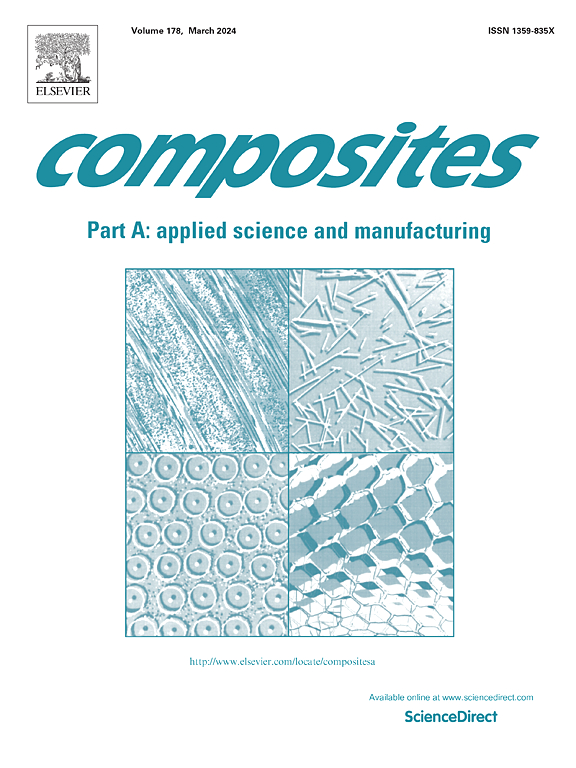Effects of woven textures on the mechanical and shape memory properties of epoxy-based shape memory polymer composites
IF 8.1
2区 材料科学
Q1 ENGINEERING, MANUFACTURING
Composites Part A: Applied Science and Manufacturing
Pub Date : 2025-03-25
DOI:10.1016/j.compositesa.2025.108885
引用次数: 0
Abstract
Woven fabrics are widely employed to enhance the mechanical properties and shape memory performance of shape memory polymers (SMPs). Although prior research has extensively investigated the effects of fiber fraction and laminate architectures on the thermomechanical properties of woven fabric reinforced shape memory polymer composites (WFR-SMPCs), the mechanistic understanding of mesoscale architectural features, particularly how woven textures influence the mechanical properties and shape memory behavior of SMPCs, remains inadequately explored. This investigation pioneers a mesostructure-driven design paradigm, correlating woven textures with shape memory anisotropy through mechanical testing and shape memory performance test. Three types of WFR-SMPCs were created using different woven carbon fiber fabrics (plain, twill, and satin) combined with an epoxy-based SMP. Microstructure analyses of these fabrics and their composites were performed. Uniaxial tensile tests explored the mechanical behavior and failure mechanisms of WFR-SMPCs in both fixed and programmable states, thereby assessing the impact of different woven textures on their mechanical properties. Additionally, bending deformation-recovery experiments assessed the shape memory performance, revealing how weave texture influences this characteristic. The experimental results indicated that woven fabric reinforcement markedly improves the mechanical properties of SMP. Variations in tow interlacing across weave types led to differing mechanical properties and shape memory performance in both (0/90) and (±45) orientations. This research offers critical insights for optimizing the design and application of WFR-SMPCs in engineering contexts.

求助全文
约1分钟内获得全文
求助全文
来源期刊

Composites Part A: Applied Science and Manufacturing
工程技术-材料科学:复合
CiteScore
15.20
自引率
5.70%
发文量
492
审稿时长
30 days
期刊介绍:
Composites Part A: Applied Science and Manufacturing is a comprehensive journal that publishes original research papers, review articles, case studies, short communications, and letters covering various aspects of composite materials science and technology. This includes fibrous and particulate reinforcements in polymeric, metallic, and ceramic matrices, as well as 'natural' composites like wood and biological materials. The journal addresses topics such as properties, design, and manufacture of reinforcing fibers and particles, novel architectures and concepts, multifunctional composites, advancements in fabrication and processing, manufacturing science, process modeling, experimental mechanics, microstructural characterization, interfaces, prediction and measurement of mechanical, physical, and chemical behavior, and performance in service. Additionally, articles on economic and commercial aspects, design, and case studies are welcomed. All submissions undergo rigorous peer review to ensure they contribute significantly and innovatively, maintaining high standards for content and presentation. The editorial team aims to expedite the review process for prompt publication.
 求助内容:
求助内容: 应助结果提醒方式:
应助结果提醒方式:


